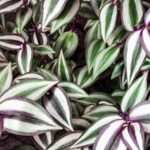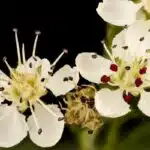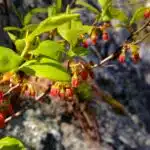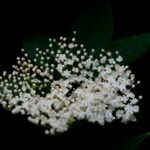Alocasia Black Velvet is a beautiful plant with its deep green, velvety leaves and striking black veins. It’s not only an eye-catching addition to any home or garden, but it’s also quite easy to care for. If you’re looking for a unique and low maintenance houseplant, Alocasia Black Velvet is the perfect choice!
With its stunning foliage, Alocasia Black Velvet will make a gorgeous statement in any room. This evergreen perennial is native to Southeast Asia and boasts broad arrowhead-shaped leaves that are deep green with striking black veins.
Caring for your Alocasia Black Velvet is relatively straightforward; it prefers a warm, humid environment with indirect sunlight and plenty of water. Fertilizing can help keep your plant vibrant and healthy too.
Growing your own Alocasia Black Velvet at home can be rewarding and fun, giving you a sense of accomplishment as you watch it thrive! With the right attention and care, this beautiful houseplant can bring life to any space in no time.
Choosing The Right Location For Alocasia Black Velvet
When it comes to selecting a location for Alocasia Black Velvet, one should be careful and considerate. Not just any spot will do; the plant has specific needs when it comes to its growing environment. It’s important to get this part just right in order to avoid any problems later down the line. So, what should you take into account?
The first consideration is light – Alocasia Black Velvet prefers bright indirect sunshine for at least four hours a day. As such, you’ll want to pick a spot that gets plenty of morning or afternoon sunlight but no direct rays. This can be tricky since many homes have limited windows and little access to natural light. If this is your situation, you may need to invest in some artificial lighting or find an alternative location.
In addition to the amount of light, you’ll also want to think about temperature and humidity levels. Though Alocasia Black Velvet can tolerate slightly lower temperatures during the winter months, it does best in warm and humid environments between 65°F and 80°F (18°C-27°C). Additionally, if your air is particularly dry then a humidifier may be necessary in order to keep the leaves looking their best. Taking all these factors into account will help ensure that your beautiful Alocasia Black Velvet thrives!
Planting Alocasia Black Velvet
Ready to get your hands dirty? Planting Alocasia black velvet is a great way to bring beauty and life into your garden. To ensure the proper care of this gorgeous plant, there are certain steps that should be taken – let’s dive in!
First and foremost, an allusion to the saying “you reap what you sow” couldn’t be more applicable here. Taking the time to properly prepare your soil and select the right location is essential for optimal growth and health of your beloved Alocasia black velvet. Here are a few tips to get you started:
- Opt for a spot with partial shade where you can easily access water;
- If planting outdoors, make sure it is away from strong winds;
- Before planting, mix soil with extra compost or leaf mould;
- Make sure you keep the soil moist but not soggy.
These simple tasks will help establish an ideal environment for your Alocasia black velvet to thrive. With these pointers in mind, let’s take a closer look at what kind of soil is best for this unique plant.
Required Soil For Alocasia Black Velvet
A lush, velvety coat of black-green foliage is what makes Alocasia Black Velvet so captivating. Growing this beautiful plant requires a special soil blend to keep it thriving and healthy.
The perfect soil for Alocasia Black Velvet should be loose, well-draining, and nutrient-rich. It should also have a slightly acidic pH range of 5.5 to 6.5 for optimal growth. To achieve this balance, create a potting mix composed of equal parts peat moss, compost, and perlite or coarse sand. This will ensure the soil retains moisture but drains quickly to prevent root rot and other diseases from developing due to soggy conditions.
Adding slow-release fertilizer into the potting mix before planting can help boost growth and encourage larger leaves over time. An organic fertilizer with high levels of nitrogen is best since this macronutrient helps stimulate foliage production. Always follow the label directions when applying any type of fertilizer to your plants as too much can cause more harm than good! With the right soil in place, your Alocasia Black Velvet will undoubtedly show off its stunning foliage for years to come.
Sunlight Requirements For Alocasia Black Velvet
When growing Alocasia black velvet, there are specific requirements for the amount of light needed. It is essential to provide the right conditions for your plant to thrive. To ensure success in caring for your Alocasia black velvet, it’s important to understand these needs and take them into account when deciding where to place your plant. Here is how you can make sure your Alocasia black velvet has sufficient sunlight:
First, it’s important to identify how much light is necessary for this type of plant. The ideal lighting scenario would be a bright but indirect location. This could be near a window with a sheer curtain or in an area that receives some natural sunlight but not too much direct exposure.
Second, you should consider the time of day when deciding where to place your Alocasia black velvet. If possible, try to avoid placing the plant in direct sunlight during peak hours, as this could cause damage or burn the foliage. Instead, opt for indirect morning or late afternoon sun exposure. Additionally, if your plant is receiving too much sun or heat, you may need to adjust its location to provide more protection from harsh rays.
Finally, if you find that your Alocasia black velvet isn’t getting enough light despite following all of the above steps and suggestions, consider investing in artificial grow lights specifically designed for plants like these. Not only will they give your plant just the right amount of light it needs but also help keep its colors vibrant and lush!
Watering Alocasia Black Velvet
Watering Alocasia Black Velvet is a critical step in the process of growing it. Juxtaposed to sunlight requirements, which are limited, frequent watering is essential for this plant. This can be achieved by making sure that it is planted in a pot with well-draining soil and providing regular irrigation. The frequency of watering should be determined by the soil’s moisture level, as too much water can cause root rot and other issues.
When watering the plant, it’s important to avoid wetting its leaves, as this can lead to disease and fungal growth. Instead, focus on giving the soil a thorough soaking until water starts running out of the pot’s drainage holes. As Alocasia Black Velvet prefers consistently moist soil rather than soggy conditions, wait until the top inch or so of soil has dried before you give it more water.
It’s also important to check for signs of overwatering such as yellowing leaves or wilting foliage. If these symptoms appear, reduce the amount of water given and allow the soil to dry out completely before resuming your regular watering schedule. With proper care and attention, your Alocasia Black Velvet will thrive! Now let’s move onto fertilizing this beautiful houseplant for optimal growth.
Fertilizing Alocasia Black Velvet
Did you know that fertilizing your Alocasia Black Velvet plant monthly can increase growth by up to 50%? Not only will this give your plant a beautiful boost in size, but it’ll also help keep its dark foliage looking vibrant.
When it comes to fertilizing this particular species of Alocasia, there are some important things to keep in mind. Firstly, you should use a balanced liquid fertilizer with an equal ratio of nitrogen, phosphorous and potassium (NPK). Secondly, dilute the fertilizer according to the instructions on the bottle and only apply it when the soil is moist. Doing so will ensure that the fertilizer is absorbed into the soil and not washed away by excess water.
Finally, avoid over-fertilizing as this can burn your plant’s roots and cause yellowing or spotting on its leaves. Instead, stick to the recommended dosage and you’ll be able to enjoy a healthy Alocasia Black Velvet plant for years to come!
Now that we’ve discussed fertilizing Alocasia Black Velvet plants, let’s look at how we can prevent pests and diseases from affecting them.
Pests And Diseases Of Alocasia Black Velvet
Alocasia black velvet is a beautiful and unique plant, but like all plants it can be susceptible to pests and diseases. On average, indoor houseplants are vulnerable to an average of two pest problems per year. With Alocasia black velvet, the most common issues include mealybugs, aphids, and spider mites. To prevent these issues, it’s important to inspect leaves regularly for signs of infestation.
When dealing with an infestation of pests or diseases, it’s essential to act quickly in order to protect your plant. Generally speaking, the affected foliage should be removed immediately and the plant treated with a suitable pesticide or fungicide. Additionally, if you notice any discoloration on your Alocasia black velvet’s leaves, this could be a sign of leaf spot disease which can spread quickly if left untreated.
Fortunately there are plenty of ways to keep your Alocasia black velvet healthy and free from pests and diseases. Be sure to always check for signs before bringing new plants into your home as well as inspecting existing plants regularly for signs of distress or infection. With diligent care and attention you can ensure that your Alocasia black velvet stays healthy for years to come!
Pruning Alocasia Black Velvet
Alocasia black velvet is an ornamental plant that grows to great heights, with some specimens towering up to five feet in height. This species of alocasia requires pruning in order to look its best and remain healthy. Pruning can help to promote new growth and it can also help to keep the plant from becoming too large for its container. In fact, research shows that regular pruning can increase a plant’s overall health by as much as 20%.
Pruning your alocasia black velvet correctly is essential for keeping it looking beautiful and healthy. Start by removing any dead or dying leaves, as well as any that are discolored or damaged. Then, remove any branches that are crossing over each other or growing too close together. When pruning larger branches, use sharp shears to make sure you get a clean cut. It’s also important to remember not to take off more than one-third of the total foliage at once – this will help prevent shock and stress on the plant.
Finally, you should fertilize your alocasia black velvet after pruning it in order to provide additional nutrients for new growth. Choose a fertilizer specifically formulated for indoor plants and follow the instructions on the label carefully. With proper care and maintenance, your alocasia black velvet will remain healthy and vibrant year after year! Now let’s move on to repotting this impressive houseplant…
Repotting Alocasia Black Velvet
Repotting your Alocasia black velvet is an essential part of its care. Repotting helps the plant to grow larger, healthier, and have a longer lifespan. If you’re wondering when and how to repot Alocasia black velvet, this article has all the information you need.
The best time to repot Alocasia black velvet is during spring or summer, when the plant is in its active growth phase. To repot it, start by carefully removing it from its current pot. Gently shake off any excess soil and inspect the roots for signs of damage or disease. Trim away any diseased or damaged roots with sterilized scissors before replanting it in a new pot that’s just a few inches bigger than the previous one. Fill the new pot with fresh potting mix and place your Alocasia black velvet on top. Firmly press down around the base of your plant to secure it in place, then add more soil as needed until the roots are fully covered.
Water your newly potted Alocasia black velvet thoroughly but not too much—it doesn’t like wet feet! Make sure you keep an eye on the soil throughout its growth season; if it begins to dry out quickly or looks pale green or yellow, it may be time to water again. With proper care and timely repotting, your Alocasia black velvet can thrive for many years to come!
Propagating Alocasia Black Velvet is yet another way of ensuring that this beautiful plant stays healthy and vibrant!
Propagating Alocasia Black Velvet
How do you propagate Alocasia Black Velvet? Propagating this stunning tropical plant is a great way to add more of these beautiful specimens to your garden. But how do you go about it?
When propagating Alocasia Black Velvet, it’s important to understand the basic principles of propagation. The first step is to select a healthy mother plant that has been recently potted and has well-established roots. After selecting a plant, remove some of its side shoots or offshoots with a sharp knife and place them in a container filled with moist potting mix. Be sure to water the planting medium regularly and keep it out of direct sunlight while the cuttings are taking root.
Once the cuttings have taken root and established themselves, they can be transplanted into individual pots. Once re-potted, ensure that the plants have plenty of light and regular watering as they become established in their new home. It’s also important to fertilize your Alocasia Black Velvet plants regularly for optimal growth.
Propagating Alocasia Black Velvet is not an overly complicated process but does require time and patience in order to get good results from your efforts. With proper care and attention, you’ll be rewarded with beautiful specimens that will last for many years!
Flowering And Fruiting Of Alocasia Black Velvet
Alocasia black velvet is a unique plant that can bring a bit of the tropics into any home. While it is admired for its deep, velvety foliage, many people are curious about the flowers and fruits this plant produces. Let’s take a closer look at flowering and fruiting of Alocasia black velvet.
When in the right conditions, Alocasia black velvet will produce small purple flowers on long stems. These flowers bloom from late summer to early fall and last for several weeks before they turn brown and drop off. The flowers may also attract pollinators like bees and hummingbirds to your garden or home.
Unlike other members of the Alocasia genus, Alocasia black velvet does not produce edible fruits or vegetables. However, some varieties may have slightly different characteristics than others so it’s worth keeping an eye out for any signs of fruiting if you decide to give this plant a try!
It’s important to remember that while these plants can be beautiful additions to any garden, they are also toxic when ingested. Before bringing an Alocasia black velvet into your home, make sure you read up on toxicity levels and safety precautions if you have pets or small children. Now let’s explore the toxicity of Alocasia black velvet in more detail…
Toxicity Of Alocasia Black Velvet
Alocasia black velvet is a stunningly beautiful plant, with its velvety deep-green leaves and purple undersides. However, it’s important to note that this plant has some toxicity associated with it. Though the plants themselves are not poisonous if ingested, they do contain calcium oxalate crystals which can cause skin irritation if touched. Here’s what you need to know about the toxicity of alocasia black velvet:
- The sap from alocasia black velvet plants can cause skin irritation or burning when touched.
- If ingested, alocasia black velvet can cause minor discomfort such as nausea and vomiting.
- As a precautionary measure, keep all parts of these plants away from young children and pets who may be tempted to touch or eat them.
- Wear gloves when handling this plant or cleaning up fallen leaves, as the sap can remain on surfaces for some time after contact has been made with it.
It’s important to take all necessary precautions when caring for your alocasia black velvet plant in order to keep yourself and your family safe from any potential harm that could come its way. Keeping the plant out of reach of kids and animals is one surefire way to ensure their safety while still enjoying its beauty in your home or garden. From there, you’re free to explore all the uses this wonderful species has to offer!
Uses Of Alocasia Black Velvet
Blast from the past! Alocasia black velvet is a stunning, exotic plant that has been around for centuries. In fact, ancient Egyptians were known to use alocasia black velvet as a decorative item in their homes. Today, this unique and beautiful plant is still providing many benefits to its owners. So, let’s take a look at some of the uses of alocasia black velvet!
First off, alocasia black velvet is an excellent indoor air purifier. Its leaves absorb volatile organic compounds (VOCs) from the air and neutralize them into harmless substances. Furthermore, it helps reduce allergens such as dust mites and pollen in your home. As a result, you can breathe easier and enjoy improved overall health.
In addition to being an effective air purifier, alocasia black velvet also looks great in any home or garden setting. Its dark green foliage provides visual interest while its vibrant flowers make it stand out amongst other plants. Plus, its ability to thrive indoors makes it perfect for those who don’t have access to outdoor gardening space. With proper care and attention, anyone can enjoy the beauty of this remarkable plant!
The uses of alocasia black velvet don’t end with air purification and aesthetics; the plant also has a variety of medicinal properties that can help treat skin conditions such as eczema and psoriasis. Studies show that extracts from its leaves are rich in anti-inflammatory compounds which may help reduce redness and itching associated with these conditions. This makes it a great option for natural healing remedies or treatments for chronic skin conditions! With so many wonderful benefits to offer, alocasia black velvet is certainly worth considering when looking for plants that provide both beauty and function. Moving on from here, let’s explore some of the common varieties of alocasia black velvet available today!
Common Varieties Of Alocasia Black Velvet
The Alocasia Black Velvet is a rare and majestic tropical plant that must be seen to be believed! It features deep, dark green leaves with a velvet texture and beautiful veins of black. With its striking appearance, it’s no wonder that the Alocasia Black Velvet is one of the most sought-after plants out there.
There are many varieties of Alocasia Black Velvet, each with their own unique characteristics. Here are some of the most popular:
- Alocasia Amazonica – Also known as “Amazon Elephant Ear”, this variety has large, deep-green leaves with white veins.
- Alocasia ‘Sarian’ – This hybrid has glossy leaves with bright green and yellow streaks.
- Alocasia ‘Polly’ – A hybrid cross between two different species, this variety has heart-shaped leaves with mottled shades of green and yellow.
- Alocasia ‘Black Velvet’ – Features dark green foliage with purple veins.
- Alocasia ‘Lutea’ – Has thick oval-shaped leaves in shades of yellow and green.
No matter which variety you choose, you’re sure to have an amazing plant that will bring beauty and life into your home or garden! Whether you’re a novice or an experienced gardener, you’ll want to ensure your Alocasia Black Velvet stays healthy and grows strong for years to come; so let’s move on to learning more about how to care for it properly.
Tips For Growing Alocasia Black Velvet
Growing Alocasia Black Velvet can be a rewarding experience. The lush, velvety foliage of this plant will add an exotic touch to any home or garden. To ensure that your Alocasia Black Velvet is happy and healthy, there are a few tips you should follow.
First and foremost, keep your Alocasia Black Velvet in indirect sunlight. This plant does not tolerate bright direct sunlight and will burn if exposed for too long. You’ll also want to make sure it’s in well-draining soil and watered regularly during the growing season. Watering too much can cause root rot, so be sure to check the soil moisture before each watering session. Additionally, fertilize your Alocasia Black Velvet every month with a balanced fertilizer to boost growth and encourage lush foliage.
Finally, be mindful of pests when caring for your Alocasia Black Velvet. Scale insects and mealybugs love this plant, so it’s important to inspect it often for signs of infestation. If you do spot any pests on your Alocasia Black Velvet, take action immediately by applying an insecticidal soap or neem oil to the plant’s leaves. With proper care and attention, your Alocasia Black Velvet will thrive in its new home!
Frequently Asked Questions
How Quickly Will Alocasia Black Velvet Grow?
If you’re looking for a lush, dramatic addition to your garden, Alocasia Black Velvet is the perfect plant for you. Its dark, velvety leaves add depth and texture to any outdoor space, and its impressive growth rate will make it look like you’ve been tending to it for years. But how quickly can this tropical beauty really grow?
The good news is that Alocasia Black Velvet grows at an impressive rate. In the right conditions, its shoots can reach up to four feet in height in just a few months. While this speed does depend on the amount of sunlight and water your plant receives – as well as other factors – you can expect to be amazed by how quickly Alocasia Black Velvet will blossom in your garden if you take care of it properly.
When growing Alocasia Black Velvet, there are some key tips to keep in mind. It’s important to remember that they prefer humid environments with bright indirect light and plenty of moisture but not too much water. The soil should also be slightly acidic and well-draining. With proper care and maintenance, your Alocasia Black Velvet will thrive!
TIP: To encourage quicker growth of your Alocasia Black Velvet, try misting its leaves every day or two with lukewarm water – this will help keep them hydrated and healthy!
How Often Should I Prune Alocasia Black Velvet?
Caring for Alocasia Black Velvet requires some effort and attention. But with the right pruning technique, you can ensure that your plant grows quickly and looks its best. Here’s what you need to know about how often to prune this tropical plant:
First, it is important to understand why pruning is essential for Alocasia Black Velvet. Pruning helps remove dead or damaged leaves, which allows the healthy foliage to soak up more light and nutrients. Additionally, it helps promote the growth of new foliage to replace any lost or damaged leaves over time.
When it comes to how often you should prune Alocasia Black Velvet, there are a few things you should keep in mind. Here are three key points to consider when deciding when and how often to prune your plant:
- Prune regularly as new growth appears – this will help maintain a balanced shape while keeping any dead leaves at bay.
- Remove any yellowed or damaged leaves as soon as possible – this will help prevent the spread of disease and encourage healthy new growth.
- Prune for aesthetic purposes – if you want your Alocasia Black Velvet to have an attractive shape, then regular pruning may be necessary.
Pruning your Alocasia Black Velvet on a regular basis is an important part of keeping it looking its best. With a bit of patience and practice, you’ll be able to create a stunning tropical display in no time!
Is Alocasia Black Velvet Suitable For Terrariums?
Is Alocasia Black Velvet suitable for terrariums? Absolutely! This stunning plant is a great choice for any terrarium or container garden. It has attractive, glossy leaves that stand out against its dark foliage, and it’s easy to care for. Here are three reasons why Alocasia Black Velvet is a great choice for your terrarium:
- It’s hardy and adaptable. This plant can thrive in a wide range of conditions, making it easy to care for in any terrarium.
- Its striking foliage adds visual interest to any space. With its glossy black leaves, this plant will make a bold statement in your terrarium.
- It requires minimal maintenance. Alocasia Black Velvet doesn’t require frequent pruning or fertilizer, so you don’t have to spend hours caring for it!
No matter the size or shape of your terrarium, Alocasia Black Velvet is sure to be an eye-catching addition to your collection of plants. Plus, this low-maintenance plant won’t take up too much of your time or energy. So go ahead and give this beautiful species a try – you won’t regret it!
What Is The Best Temperature Range For Alocasia Black Velvet?
Are you looking for a houseplant that never fails to impress? Then, look no further than Alocasia Black Velvet! This stunning plant is a must-have for any home, and it’ll make sure your living space looks truly luxe. But just how should you care for this beauty? Let’s take a look at what temperature range is best for Alocasia Black Velvet:
To keep your Alocasia Black Velvet thriving, here’s what you need to know about the ideal temperature range: •tIt does best in temperatures between 65-75°F (18-24°C). •tIt doesn’t like the cold – ideally, don’t let temperatures drop below 55°F (13°C). •tIt loves humidity – mist the leaves regularly or use a humidifier. •tAvoid direct sunlight as this can scorch the plant. •tKeep away from draughts and air conditioners as these can cause stress to the plant.
When it comes to caring for your Alocasia Black Velvet, making sure it’s in the right temperature range is essential. Not only will this help keep your plant healthy, but it’ll also ensure its vibrant foliage stays looking lush and beautiful. So if you want to keep your houseplant looking its best, make sure you provide it with the optimal temperature range!
Is Alocasia Black Velvet Toxic To Pets?
It’s no surprise that many of us now have furry companions to keep us company. But when it comes to houseplants, we must always be extra cautious. After all, not all plants are safe for our beloved pets. So the question remains: is Alocasia Black Velvet toxic to pets?
Surprisingly, this plant is actually one of the safer varieties out there. While it can cause mild irritation if ingested, it’s not considered toxic in any way. This makes it a great choice for homes with cats and dogs running around – as long as it’s kept out of reach! However, its foliage doesn’t fare so well when exposed to direct sunlight. To ensure that your pet stays safe and healthy, make sure to keep Alocasia Black Velvet away from direct sunlight and drafts.
Alocasia Black Velvet is a beautiful plant with deep green leaves that are perfect for adding a touch of style to your home or garden space. It does require some care – like regular watering and fertilizer – but the payoff is worth it when you create a lush space for both you and your pet to enjoy!
Conclusion
Alocasia Black Velvet is an attractive, dark-leaved plant that can add a unique look to your garden. Not only does it have striking foliage, but it also grows quickly and is easy to care for. Pruning the plant occasionally helps keep its size manageable, while maintaining a temperature range between 65°F and 80°F will ensure optimal growth.
But before you bring this beautiful plant into your home or garden, there’s one more thing to consider – toxicity. While Alocasia Black Velvet isn’t considered dangerous to humans, it can be toxic to pets if ingested. So be sure to keep the plant away from any furry friends in your home.
With proper care and attention, Alocasia Black Velvet can be a great addition to any garden or home – just make sure you take the necessary precautions. The beauty of this plant is undeniable and with a little bit of effort, you can ensure that it lasts for years to come!





























